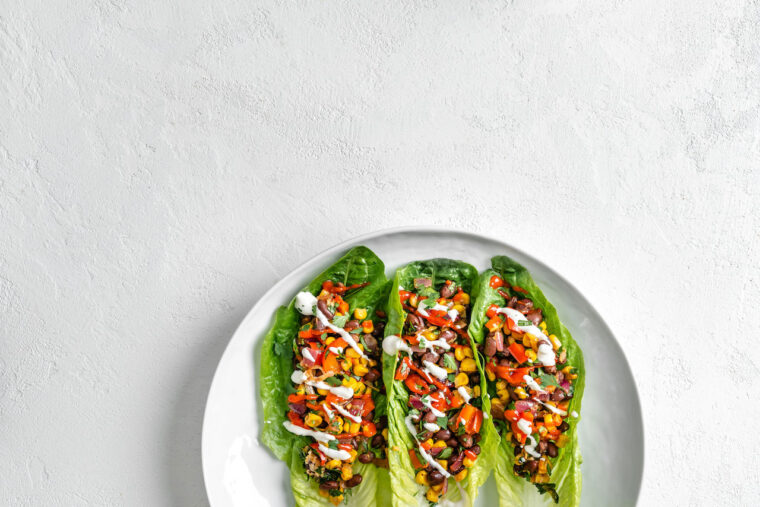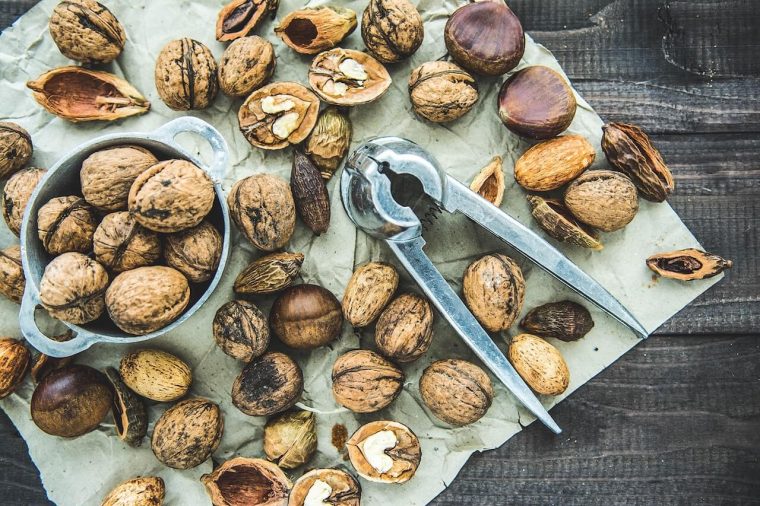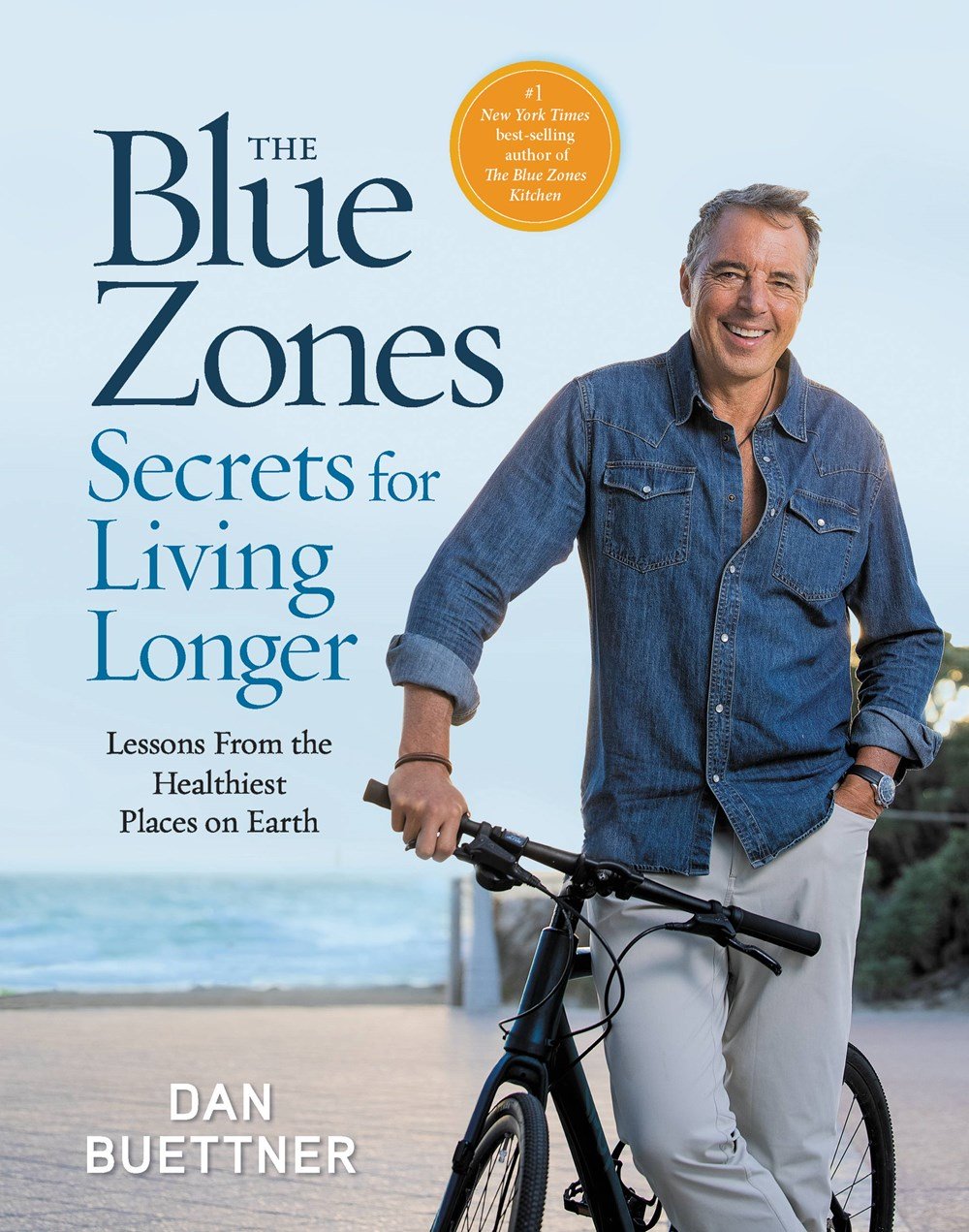If you’ve read this newsletter for any amount of time, you know that I love a good paradox—and if you’re a particularly careful reader of this newsletter, you know that I love paradoxes for a reason.
Paradoxes are instructive. They force your brain to confront natural contradictions and to realize that most of them aren’t actually contradictory—that there’s almost always an explanation, if not several, for how “both things can be true.”
The blue zones are loaded with paradoxes, but here’s the one I’ll mention today:
On one hand, it seems obvious that blue-zoners are less busy than we are. They don’t have cultures of hurry or ambition; they don’t have a million appointments jammed into their calendars every week; their typical pace of life is what we might label “beach vacation.” These people know how to chill and enjoy life.
But on the other hand, they have the same basic needs as us and they still bother to do a lot of things we “don’t have time for.” They do household chores without mechanical assistance, they garden, they cook everything by hand, they take their time eating it—in short, they do a hundred extra things we know we “should” do—and then they still raise their kids and go to work and earn a living just like us!
We could pull apart this paradox in several different ways, but here’s where I choose to pull first:
A lot of our conveniences (the ones that they don’t use) have made us less focused, less efficient, and less healthy without even realizing it.
In our cycle of innovation, what’s novel today is taken for granted tomorrow—and while it’s tempting to call this “progress,” this tendency has been slowly encroaching upon our health for decades. So many of our problems could have been averted if we had all truly taken eight simple words to heart: just because you can doesn’t mean you should.
As I write those words, my brain is flooded with examples of American grocery-store junk-food, whose mutations seem more and more grotesque recently (powdered-donut cereal, anyone?).
But I started writing this because the more troubling trend, to me, is that fewer and fewer people are even going to the grocery store anymore. The convenience of “shopping without shopping” became a necessity a few years ago, and I think a lot of people have forgotten that it’s back to being a convenience (with all of the pitfalls that entails).
So in today’s first article, I’ll unpack the merits of shopping on foot, as they do in the blue zones—and in today’s second article, I’ll give you an unusual (but very tasty) reason to head to the grocery store and fire up the grill.

People living in blue zones aren’t actively trying to cultivate habits for long life. Their environments are set up in ways that naturally support healthy behaviors. In this section of Eating to 100, I will share one simple habit you can incorporate into your life. Do it long enough, it becomes part of how you live. Build up enough of these habits, you’ll likely add years to your life and life to your years.
I’ve mentioned countless times that many blue-zoners maintain their own gardens and therefore have regular access to fresh, local produce. I like talking about the blue zones’ home gardens partly for the clean eating, but also because they exemplify other blue-zone boons like downshifting, habitual hobbies, and low-impact physical activity.
My only hesitation in mentioning their gardens so often (and it’s a very minor hesitation) is that I don’t want to give the impression that a typical blue-zoner grows all of their own food. Some of them might, but most people in the blue zones still need to go to the grocery store—just like us!
It’s tempting to imagine the blue zones as these idyllic Gardens of Eden where people don’t need grocery stores and yet the option is still made available as a modern convenience. The funny thing is that the blue zones have a way of making even the modern, convenient food option (buying groceries at the store) a net positive for their health and a natural fit into a sustainable, longevity-friendly routine.
Yes, part of the difference is what they have in their grocery stores, and yes, there’s a lot less junk food than in places like America. But that doesn’t explain the whole difference because a typical blue-zoner tends not to go for junk food even when it’s right in front of them.
So what else is it about blue-zone shopping that’s so much healthier than ours?
Simple: they get a lot more steps in over the course of running their errands.
First of all, they usually walk to and from the store rather than driving; that’s already a lot more steps (and with added weight to carry on the return journey).
They also run those errands more frequently than we do; if a typical American household makes 1-3 weekly trips to the grocery store, it’s more like 3-6 in the blue zones. They don’t have Sam’s Club or Costco in the blue zones, and they probably wouldn’t want one.
Now, believe me: I do understand that most of us live in a different world (so to speak) that simply isn’t built to accommodate so much walking. It would be quixotic and foolish of me to suggest that you stubbornly walk your errands despite living in, say, Wichita. That’s a good way to get yourself hit by a truck. 😬
At the same time, it’s important to look for opportunities for incremental progress, to add blue-zone factors to our lives as much as we can. To adapt an example I’ve used before: maybe you can’t terraform your neighborhood to make it steeper and hillier like Sardinia, but you can reap some of the benefits of Sardinian verticality by just taking the stairs more often.
So here are my four suggestions—two Don’ts and two Dos—for squeezing more steps out of your regular errands and having a better time of it besides:
1️⃣ Don’t outsource your aisle shopping if you can possibly help it. Necessity is the mother of invention and, during COVID, we needed ways to avoid going into stores. Options like Instacart and curbside pickup had already been invented, true—but my point is that we were all forced to use them and, in turn, forced to realize just how convenient those options are.
Ignorance was bliss, and now we are all cursed with knowledge.
I won’t say there’s never a time or place for outsourcing errands; during a particularly busy day or week, the option to pay nominally more and save useful time is a fantastic card to have up your sleeve. But it’s important to realize that we no longer need that option in the strict sense of the term (as we did before) and that the healthiest way forward is actually the way backward: doing our shopping the old-fashioned way, where we walk around and pick things out ourselves.
2️⃣ Don’t insist on finding the closest parking spot. Have you ever noticed how irritated some people can get when there isn’t a parking space close enough to the door for their liking? (Some of you are blushing.)
Let’s try to remind ourselves that even the more sedentary adults among us are walking multiple miles per day just by living our lives. A hundred extra yards and one extra minute of walking won’t hurt us.
3️⃣ Do go “out on the town” sometimes. Ideally, you’d be able to walk somewhere from your house—but short of that, pick a spot where you can park, walk around, maybe do a little shopping, have dinner, and walk a bit more before you drive home again. It’s social time, it’s easy physical activity, it’s getting out there, and it’s spending your money with local businesses (all good things).
4️⃣ Do find ways to run errands more frequently (i.e. to split the same shopping into a greater number of outings). Walking to the local market and getting groceries every day or two makes natural sense in the blue zones’ environments; it fits perfectly in the flow of life. For a lot of Westerners, though, it’s a little contrived (and/or a pain in the ass) to find yourself at the grocery store so frequently—the kind of thing that only happens when you’re forgetful or ill-prepared.
The key to success here is to find ways to increase the number of errands without violating economy of motion (essentially, the idea that it’s wasteful to go back and forth more times than necessary). For example, if the grocery store and pharmacy are a stone’s throw apart, it would be wasteful to do those errands separately—to go out and come back twice. On the other hand: if you drive past them every day anyway, it’s not wasteful to do them separately and might even be better.
Oh, and lest I forget the other big perk of frequent shopping: everything is fresher. Enough said.
HONORABLE MENTION: Don’t take a shopping cart (“trolley” for Commonwealth folks) unless you’re absolutely certain you’ll need one. Take a basket instead, or two baskets if you’re feeling bold. Worst case, you wind up needing to go back for a cart and you have yourself an itty-bitty workout. We’ve all been there and… well, is it really so bad?

Last time in Pantry Powerhouse, we covered the fundamentals of Caesar salad, one of the simplest and most popular salads in the Western world.
If you didn’t learn anything new last time, I will confess: I was saving the fun stuff for this second part. 😎
Today, we’ll be discussing some of the many, many ingredients you can add to a Caesar salad without fundamentally altering its character or flavor. We’ll cover those Caesar add-ons in three sets, starting with…
PLANTS 🍅
If you like Caesar salad (or could), I want you to realize first that it represents a good nutritional opportunity—and I don’t just mean something generic like “salad is good for you and you should eat more of it.” I mean something specific, the logic of which goes like so:
- Our overall physical health, including every bodily system from our brains down to our toes, is more a function of gut health than most people realize.
- One of the best long-term predictors of gut health is the plant diversity of our diets—not just the sheer volume of plant matter we eat, but how many different species of plants are included in our food (even if the amounts are relatively small). The wider the variety of fruits and veggies we eat, the healthier our guts will be and the better they’ll be able to serve every other system in our bodies.
- Caesar salad only contains one plant species by default, but it can be expanded and garnished with countless others while still retaining its essential appealing flavor. A dressed-up Caesar could easily contain a dozen different plants!
Here are some of the conventional options in the proverbial plant buffet (and for counting purposes, bear in mind that some of these bullets include multiple species of plants):
- Tomatoes, probably cherry/grape (whole or sliced in half), potentially sun-dried
- Corn, which is mild and easy to like—and also easy to add (I’ve seen small cans and cups at the grocery store)
- Garlic in a format of the cook’s choosing
- Mushrooms to the cook’s specification
- Raw onions, be they chopped or julienned, white or red, or (less commonly) cocktail/pearl onions or green onions/scallions
- Peppers, whether chopped bell pepper or banana pepper or (if you insist on spice for some reason) something like a serrano or jalapeño
- Whole peas like snow peas or sugar snaps, raw or lightly steamed and then cooled
- Other greens like spinach, arugula, or spring mix (though I would argue that it’s not really a Caesar unless it contains at least some romaine)
And then what I’d call “the Mediterranean department,” or plants which tend to give Caesar salad a Greek-ish twist:
- Cucumber of some kind, chopped or coined
- Olives, with the cook choosing the type of olive and its final texture (whole pitted, sliced, chopped, and so on)
- Artichoke hearts, chopped or pulled apart
- Chickpeas (a.k.a. garbanzo beans), whether simply drained and rinsed or something more elaborate like roasted
- Capers, carefully removed from the water/vinegar/salt in which they were contained
- Fresh lemon zest and/or juice if you want more tang and acidity
- Fresh herbs like—cue Simon and Garfunkel—parsley, sage, rosemary, and thyme (and basil, oregano, tarragon, and so on)
PROTEIN 💪
The main variable here is, of course, your dietary preferences with regard to meat and animal products.
Among carnivores, the most popular protein addition seems to be grilled or blackened chicken, followed by steak or salmon. In any case, for best results, you usually want to prepare the protein whole and then slice it up like you want in the salad; this helps the protein to cook evenly with a minimum of fat and then retain moisture as it rests and cools.
Vegetarians might add boiled eggs or plant-based versions of meat products.
Protein pickings are slimmer for vegans, as always, but it’s worth noting that some of the ingredients mentioned in the other sections are high in protein—chickpeas and almonds, for instance. (I assume there’s a way to add tofu to a Caesar salad but, if there is, I haven’t yet seen a restaurant try it and I haven’t tried it myself.)
GARNISHES 🌸
By definition, garnishes are not essential ingredients; they’re meant to “finish” the dish’s texture, flavor, or even just appearance. But that doesn’t mean they don’t make a difference! They’re ingredients you might add even if you’re just making a salad for yourself and not looking to impress anyone else.
Here are four Caesar garnishes worth mentioning (other than croutons) and why I like each one, at least in theory:
- Nuts like slivered almonds. They do add some protein, but the main role of nuts is to add texture to the salad. I like almonds here—slivered if we’re being specific—because their mild flavor blends in perfectly, yet they still have plenty of crunch and they go a fair way towards replacing croutons. (Bonus points: lightly roast the nuts on a baking sheet in the oven. You can do this in batches and store them for quite some time.)
- Lemon wedge or lemon twist. Any form of lemon is a good garnish simply because it’s a bright contrasting color; if that’s all you want, a martini-style twist can be fun. If you or your fellow diners might also want extra lemon juice, a wedge is probably better.
- Anchovies (if you’re into that). Again, they weren’t part of the original Caesar recipe (except by way of Worcestershire) and I don’t care for them myself, but there’s plenty of precedent supporting you if you want to add them.
- Other supplemental dressings. Anything that adds flavor without completely altering the salad or smothering its nutritional value is welcome. You can use your imagination or skip to the very end for my favorite example.
If you want to be inventive, the usual trick for garnishes is to crack open the dish’s full list of ingredients (including the ingredients within the ingredients) and pick something on that list to incorporate in a new way.
* * * * *
By now, you probably have more than enough to set yourself loose on a novel new Caesar salad—but before I go, I did want to mention an unusual-sounding but extremely delicious variant that’s worth trying at some point.
This variant is often called something like grilled Caesar and, though that name is accurate, our brains don’t always process it correctly. We’re used to seeing those two words together, but there’s usually another word (like “chicken”) in the middle, and the meaning is totally different without that middle word.
Namely: a ‘grilled Caesar’ is a Caesar salad where the lettuce itself is grilled, not just any supplemental protein added to it. That might sound weird if you’ve not encountered this idea before, but bear with me.
Instead of chopping the romaine, you cut the hearts into symmetrical halves (lengthwise) and lightly drizzle them with olive oil. Then you grill them over medium-high heat, flat side down, for 2 or 3 minutes—just long enough to form some grill marks. Finally, you take them off the grill, plate them, arrange the other ingredients as you please, and dress them.
Aside from the fact that the lettuce is grilled, this kind of salad is unusual in that (A) you have to cut it with a knife, not just poke at it with a fork, and (B) you can taste the umami flavor of the grill even though the lettuce was barely on long enough to change temperature. Still, I find both of these unusual properties highly enjoyable from time to time!
And in case you were wondering: no, the romaine doesn’t get all soggy, nor does a grilled Caesar strike the brain as “hot lettuce.” If you do it right, the lettuce keeps all of its crunch and the salad, while not ice-cold, doesn’t retain any real heat by the time it’s plated and dressed.
Props to the Second Street Bistro in Williamsburg, VA for re-introducing me to this idea some years ago. They also drizzled a bit of slightly-sweet balsamic-vinegar reduction over the romaine, and it lifted an already-great salad into the stratosphere. 🤌

Southwestern Lettuce Wraps
Ingredients
1 1/2 tablespoons vegetable oil
1 small red or green bell pepper, diced
1 small red onion, diced
1 (15-ounce) can corn kernels, drained and rinsed
3 garlic cloves, minced
1 (15-ounce) can black beans, drained and rinsed
1/4 cup packed minced fresh cilantro
1 teaspoon chili powder
Salt, to taste
Juice of 1/2–1 lemon
Large lettuce leaves (romaine, butter lettuce, iceberg, etc.)
Avocado slices
Diced tomatoes
Hot sauce
The Method
- In a large skillet, heat the oil over medium-high heat. Add the bell pepper and onion and sauté until the veggies start to become tender, 1 to 2 minutes.
- Add the corn and garlic and sauté for 5 minutes.
- Stir in the beans, cilantro, chili powder, salt, and lemon juice (start with 1/2 of the lemon and add more at the end if you’d like more tang) and cook just until heated through.
- Allow to cool for 5 minutes, then serve in lettuce leaves.






